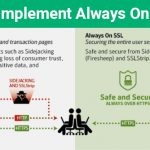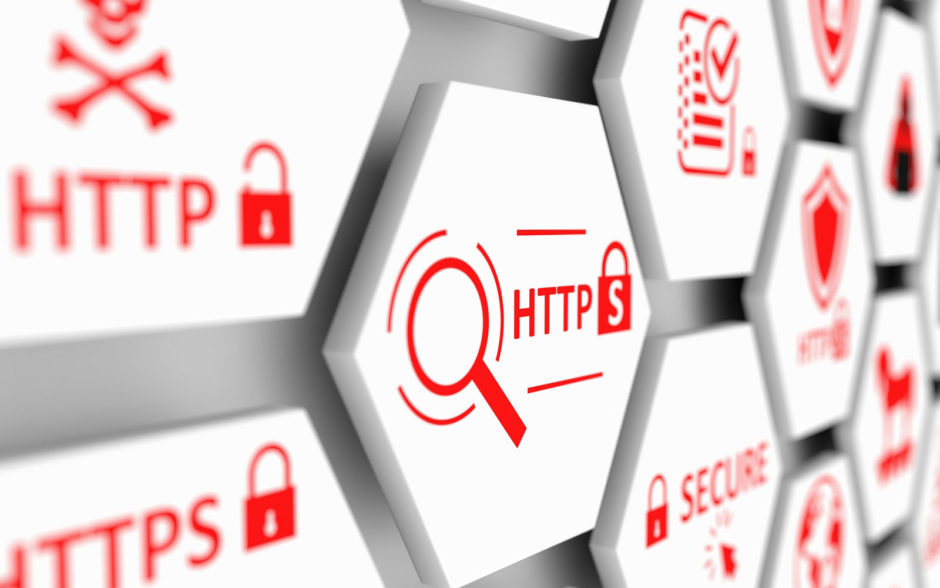What Is a PKI Certificate and How Do I Get One?
PKI: Explore how these 4 popular PKI certificates secure your organization’s security posture in an insecure digital world
To facilitate secure data transfer between two endpoints, public key infrastructure (PKI) was introduced. The X.509 digital certificates that use public key encryption are known as PKI certificates.
But wait…what’s the need of a PKI cert?
When the internet was introduced to the world of technology, it was a revolutionary invention for quick data transfer from one endpoint to another. People had concerns about the security of the data transferred online, but it was deemed an easy problem to deal with. As David D. Clark, an MIT scientist, recalls in an interview about those early days of the internet: “It’s not that we didn’t think about security. We knew that there were untrustworthy people out there, and we thought we could exclude them.”
But when people started using the internet for businesses and sharing sensitive information such as payment card numbers, healthcare data, bank information, personally identifiable information, tax data, etc., the need for protecting such data became more urgent. That’s where a PKI certificate became the need of the moment.
In this article, we will explore what is a PKI certificate and, more importantly, why should you use it and how to get a PKI certificate.
What Is a PKI Certificate?

From a high-level perspective, PKI certificates are types of data files that convey specific information about their individual certificate requesters and are used to negotiate encryption parameters. In general, they use mathematical formulas to:
- validate the identity of servers, browsers, websites, email clients, software developers, and publishers;
- encrypt and decrypt data at rest (such as emails and files sitting on servers);
- secure the transmission of data in transit via the internet (including ecommerce transactions);
- attach digital signatures to software, documents, and emails.
Types of PKI Certificates
The popular PKI certificates are as follows.
SSL/TLS Certificates
SSL/TLS certificates are useful for securing data transmission between a website’s server and users’ browsers. Website owner buys and installs SSL certs on the server where the website is hosted. These certificates vary in terms of:
- validation — domain validation (DV), organization validation (OV), and extended validation (EV)
- functionality (what they cover or secure) — single domains, multi domains, single-level subdomains (wildcards), and multiple sites and subdomains (multi domain wildcards).
Personal Authentication Certificates
Personal authentication certificates, also known as email signing certificates and S/MIME certificates, are useful for securing email communications by inserting digital signatures and using hashing functionality. They also can be used for the client (i.e. recipient) authentication.
Code Signing Certificates
Code signing certificates are perfect for protecting downloadable software, drivers, and executables. Software developers and publishers use them. These certificates are available in organizational (OV) or individual validation (IV) format, as well as extended validation and help software developers avoid the security warnings.
Document Signing Certificates
Document signing certificates are useful for securing documents shared over the internet by inserting digital signatures and using hashing functionality.
We’ll talk more later about each of these types of certificates and their individual uses. In the meantime, let’s understand where PKI certificate keys come into play.
What Is Public Key Infrastructure?
Public key infrastructure is the set of technologies, policies, frameworks, procedures, that encompasses and supports public key encryption and authentication. PKI was developed by a British intelligence agency named Government Communications Headquarters (GCHQ) back in the 1960s.
A PKI certificate involves the use of mathematically related key pairs, known as the public key and private key, which are generated and assigned to verify the identities of the endpoints. These keys are also used for encrypting and decrypting the data.
To read more on PKI basics, be sure to check out our related article o the topic.
How to Get a PKI Certificate
Before deciding how to get a PKI certificate (whether you wish to purchase one from a CA, reseller, or web hosting provider), you should be aware of which PKI certificate you require for your platform. Here, we have listed the most common types of PKI certificates, how they are used, and where you can buy them:
1. SSL/TLS Certificates
SSL/TLS certificates, which are also known as HTTPS certificates (and are most frequently referred to when talking about PKI certificates), are used by website owners to secure the communication between a website (server) and the client (browser). They facilitate identity assurance and encryption using PKI technology.
How Do SSL/TLS Certificates Work?
- When you apply for an SSL certificate and complete the verification procedure, the PKI certificate authority issues an SSL/TLS certificate to the hostname (website’s domain name or IP address), attaches the public key to it, and signs the certificate with its own root (or, more commonly, its intermediate root) certificate.
- When someone tries to open a website, the browser (client) verifies the PKI certificate authority’s signature from its pre-installed root store.
- The browser creates a session key and encrypts it using the public key of the website.
- This encrypted session key reaches to the website’s server. The server then decrypts it by using the website’s private key.
- Now, this session key is used for encrypting and decrypting data transmitted between browser and server for that entire session.
How to Get a PKI SSL/TLS Certificate: You can buy an authentic SSL/TLS certificate from the top-notch PKI certificate authority Sectigo.
Please note that there are many types of SS/TLS certificates available in the market. To understand which SSL/TLS is best suitable for your website, please refer to our SSL/TLS Types page.
2. Code Signing Certificates/Software Signing Certificate
These PKI certificates are used to secure downloadable software such as device drivers, applications, executables, and scripts. A code signing certificate is purchased and used by software developers/publishers.
How Do Code Signing Certificates Work?
- The CA will verify the identity of the applicant or the organization and before issuing a code signing certificate to any entity.
- The CA attaches the public key to the code signing certificate and signs the certificate. Its corresponding private key will be safely stored with the software publisher.
- After finishing a piece of software, the software publisher will use their private key to insert a digital signature. No one can copy, delete, or modify this digital signature.
- Unlike an SSL certificate, the code signing certificate doesn’t encrypt the code itself. Instead, it hashes the entire code along with the digital signature.
- When a user tries to download the software, their system checks the PKI certificate authority’s signature. Then, it generates the hash value, which must match with the hash value received with the software.
- The intact hash value shows that software is in the same condition as it was last developed and signed by the software developer. This communicates that it was not tampered with or altered while it is in transit.
How to Get a PKI Code Signing Certificate: There are many PKI certificate authorities selling the code signing certificate. Among them, Sectigo sells the most affordable and reliable certificates. It is the only CA that sells code signing certificates for individual developers, too. You can check out the prices, features, types, and discounts on our product page.
3. Email Signing Certificate
An email signing certificate, also known as a secure email certificate or S/MIME certificate, is used to secure communication between two email clients. By encrypting the email data before it ever leaves your email client, it secures your data while it’s in transit and at rest. This PKI certificate enhances email security by enabling you to digitally sign your emails and encrypt them. It ensures the integrity of the email content, provides prevention from eavesdropping and gives assurance about the sender’s identity.
How Do Email Signing Certificates Work?
- When you buy an email signing certificate, the CA will send an email titled “Please verify your application” with a unique set of instructions.
- Once you complete the validation procedure, the CA will issue you an email signing certificate, which you need to install on your email client.
- Now, you can digitally sign all the outgoing emails using your private keys. The email signing certificate hashes the digital signature and the rest of the email content and encrypts this hash value.
- When the recipient receives the email, their email client will generate another hash value. If an email or the digital signature has tampered in the transit, the original email’s hash value will change. And the recipient will get alert that the integrity of the email has been compromised in the transit.
- To encrypt an email, you use you recipient’s public key and they use their corresponding private key to decrypt the message once they receive it.
How to Get a PKI Email Singing Certificate: You can get one of the industry’s leading email signing certificates at a discounted rate from SectigoStore.com.
4. Document Signing Certificate
The document signing certificate is a way to protect the documents which are sent over insecure internet. In a nutshell, these certificates validate a file creator’s identity as well as the integrity of the file itself.
How Do Document Signing Certificates Work?
- The PKI certificate authority follows a rigorous vetting process to verify the identity of the applicant (the person signing the document) and the organization itself. They make sure the person who is signing the document is the authorized representative of the company.
- Once the verification procedure is done, the PKI CA mails a USB drive (a token) containing the document signing certificate and private key to your organization’s physical address.
- The user can attach their digital signature on the document using this private key.
- The document signing certificate hashes the entire document along with the digital signature and encrypts the hash value.
- When the recipient receives the encrypted document, another hash value is generated, which must be the same as the one that came along the document.
- The intact hash value is proof that the document is in the same condition as it was sent-without any tempering.
- The digital signature is made of 2048-bit RSA Key, which is impossible to forge. If someone tampers with it, the hash value changes, indicating its compromise. Thus, the digital signature assures the identity of the document signer.
The Role of a PKI Certificate Authority Regarding PKI Certificates
The organizations that are trusted to issue the PKI certificate are sometimes called PKI certificate authorities or PKI CAs. Most commonly, though, they’re just called certificate authorities or CAs.
One of the major pillars of the PKI certificate is identity assurance. When you try to access some services on a website, the website verifies your identity by asking your passwords, one-time pins (OTPs), security questions, etc. But how can your browser (client) authenticate the website? In other words, how can you make sure that the website you’re trying to communicate with is who it claims to be, and that your information isn’t being redirected to any other website’s server?
This is where a PKI certificate authority comes into the picture.
The PKI certificate authority serves as a third-party mediator who is trusted by both parties in a transaction. They’re responsible for issuing (and revoking) PKI digital certificates and managing the public keys and credentials that are used for data encryption. A PKI CA verifies the identity of the certificate owner, binds the public key with the PKI certificate, and puts a digital signature on the certificate using its private key.
All the PKI certificate authorities must follow the certificate format defined by X.509 standards. They also need to strictly abide by the validation, issuance, and revocation rules specified by the Certificate Authority/Browser Forum (CA/B Forum).
The most recognized and widely used PKI certificate authorities include:
- Sectigo (formerly Comodo CA)
- DigiCert
- GoDaddy
- Entrust
Where Cryptographic Keys Fit into the Equation
Each website, email client, or software publisher’s server has its own unique set of cryptographic public and private keys. The public key is available to everyone and is used to encrypt the data. The private key, on the other hand, is confidential and must be stored by the PKI certificate owner safely on their server. By keeping the private key a secret, any data that’s encrypted using the public key can be decrypted by the corresponding private key.
These keys are made of using different types of algorithms, such as Rivest-Shamir-Adleman (RSA) or Elliptic Curve Cryptography (ECC). The strength of these keys varies from 1024 bits to 4096 bits.
These certificates are an integral part of PKI.
A Final Word on PKI Certificates
People have some strange misconceptions about cybersecurity, such as that small companies or start-ups are safe online, that government agencies and big companies always take high precautions to save their data, etc. However, real cybercrime statistics reveal a totally opposite scenario — one in which, no matter how big or small your organization is, it’s at risk.
Being cybersecurity vigilant is a need that continues to grow as cybercriminals get smarter and more creative with their attacks. PKI technology is the revolution in the world electronic communication. You must install an appropriate PKI certificate on your system to protect you and your users from various types of cyber-attacks such as man-in-the-middle attacks, email spoofing, phishing attacks, distributed denial of service (DDoS attacks), session hijacking, etc. Otherwise, a single cyber-attack is enough for an organization to lose its hard-earned reputation and millions of dollars in potential lawsuits and noncompliance penalties.
























 (37 votes, average: 4.35 out of 5)
(37 votes, average: 4.35 out of 5)






No comments